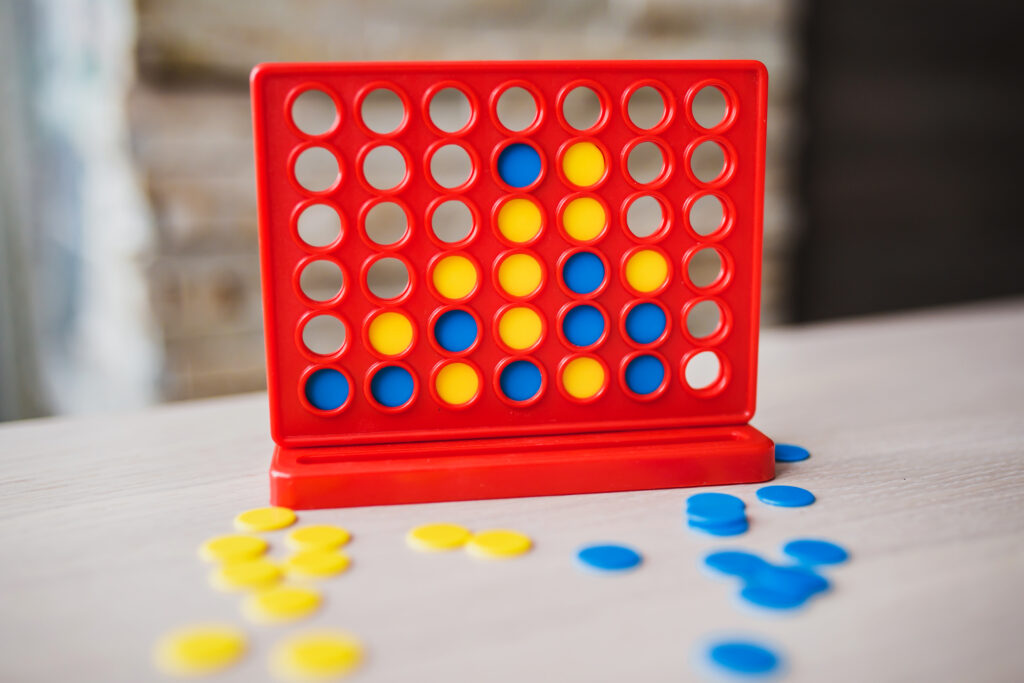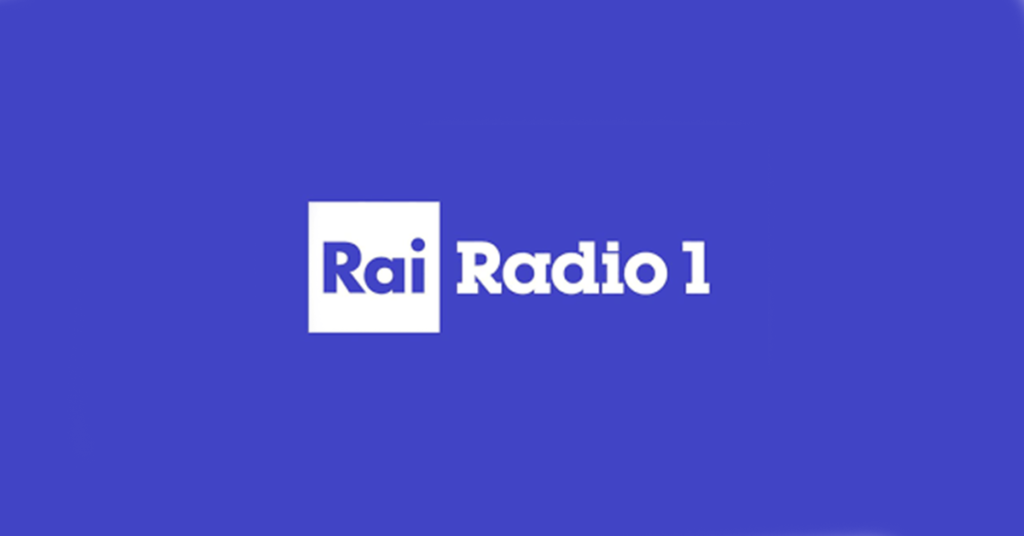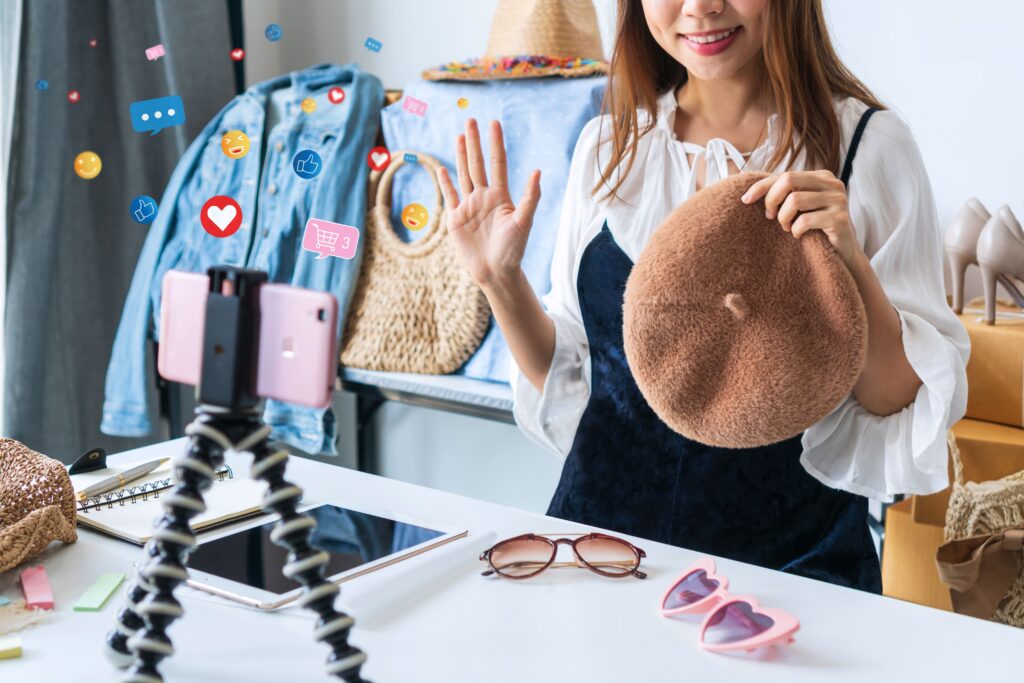In contrast to what is commonly believed, 2020 did not represent the maximum peak in the use of ecommerce by consumers, despite the fact that, at times, online purchasing was the only option available.
Both in 2021 and 2022, we saw an increase in user interest in online channels, resulting in increased searches and total ecommerce revenue, especially in certain sectors.
It would therefore be more accurate to class 2020 as the year of the “training of the end-customer”, when the digital divide gap was reduced, especially for generations having less affinity with the digital world, increasing awareness and increasing the use of digital assets and consequently volumes of interest.
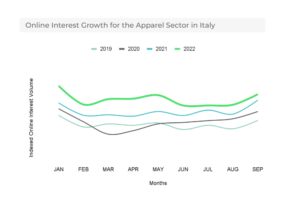
Source: Google Internal Data, 2019 – H1 2022
Online investment and competition are on the rise – Marketplace: opportunity or threat?
With the increase in demand and the changes in consumer habits, many players from different industries have prepared themselves by accelerating the processes of digital transformation already underway, leading to an inevitable increase in both direct and indirect online competition – especially with marketplaces – in a race to be first to intercept consumers who look online to make their purchases.
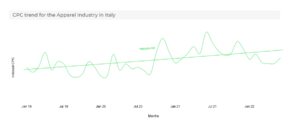
Source: Google Internal Data, 2019 – H1 2022
The progressive increase in costs per click has therefore led to an increase in advertising investments to maintain high performance and not lose market share to these new players in the online market.
Marketplaces in this context are not only visibility vehicles for brands, but become direct competitors when the user is still in an exploratory phase, that is, when they have not yet expressed their preference for a specific brand.
Analysing the main searches for fashion in generic categories (so, not linked to a brand), the coverage offered by marketplaces and aggregators in Search is significant, at 66% of the visibility on search engines.
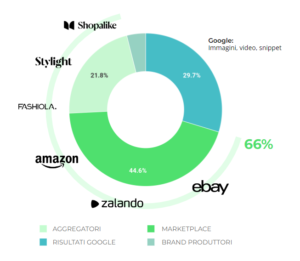
Source: Google Internal Data, ranking report no brand keyword – fashion sector
At the same time, it should be mentioned that these are a valuable resource for brands because they make it possible to increase awareness and reach new audiences who are not necessarily already familiar with the brand and its products, in a specific context and at a moment of high propensity to buy.
It is therefore essential to be able to monitor the continuous evolution of the scenario, using tools capable of demonstrating the impact of the competition on visibility and evaluating the actual competitive advantage and the margin generated by partnerships with marketplaces or aggregators in light of the missed opportunities on our channels.
Working on Searching: SEO as a balance for investments in adv
The structure of ads has adapted to Google’s increasing desire to move towards automation in the use and evolution of its advertising tools.
A clear example of this intent is embodied by Performance Max, the new campaign type that focuses on specific business objectives and leverages automation to achieve them more efficiently.
The strength of these new campaigns lies in the fact that, depending on the objective and target, it is the tool that decides which channel to use, fishing from the complete Google inventory (YouTube, Display, Search, Discover, Gmail and Maps), optimising costs and performance. Search structure is also adapting to these changes: Google uses increasingly automated tools (smart bidding algorithms) to understand page content and search intent so as to provide consumers with the best response.
In this context, keywords lose their importance at the bidding level, but they are increasingly important in site optimisation, to ensure that search engines return more relevant results to the user.
The fact that site optimisation was a direct objective to improve consumers’ organic control and user experience is common knowledge, but today it also becomes central to digital strategy for the performance of paid campaigns, where this activity affects conversion rates and CPC.
An example of this is Dynamic Search Ads (DSAs), which use a site’s content to provide users with relevant ads, based on their search intent:
Campaigns on SEO-optimised sites bring a clear improvement in terms of costs/benefits. The conversion rate doubles (+100%) in favour of significant cost savings, reducing cost per click by 70%.
Having an SEO strategy to support the site is therefore not only essential in terms of increasing the organic traffic generated by the site, but also in the general digital strategy, bringing about cost reduction for investments at the advertising level.
SEO therefore becomes the starting point for building lasting visibility over time and, at the same time, paid searching will be an extra benefit that allows you to achieve better results in the short term.
The danger of drawing hasty conclusions
Be careful how you draw conclusions: in a highly competitive ecosystem like the current one, thinking one can disinvest, even where organic positioning gives good results, means risking favouring the competition and undermining the results obtained from investments made so far.
Considering also the ever-increasing trend of online brand searches, protective measures through search campaigns prevent other competitors from using our name to gain traffic.
To support performance campaigns, it is essential to improve awareness and communication of your brand by focusing on recognisability to increase conversion opportunities, especially when the consumer is in the exploration and comparison phase and has not yet expressed a preference.
In addition, bringing the brand closer to the product category of interest or that with better margins, in order to make it top of mind in for end customers, can lead, in the long term, to an incremental growth in conversions.
For this reason, Awareness and Performance play a dual role in capitalising on the investment made and in guaranteeing competitiveness. These, together with a by now consolidated SEO optimisation, contribute synergistically to feeding the digital strategy.
This article was written by Stefano Bocchini, Alfredo Landini, Digital Marketing Strategists and Gabriele Toschi, Head of SEO.










